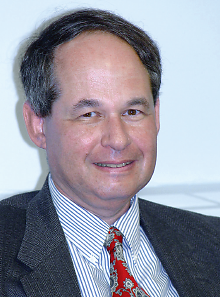Transmission of Anxious Behaviors to Offspring Has More to Do With Environment Than Genes
Abstract
An AJP in Advance study suggests that parents who are anxious can be counseled and educated on ways to minimize the impact of their anxiety on their children’s development.
The association between parental and offspring anxiety and neuroticism appears to be environmental rather than genetic—that is, children and adolescents learn anxious behaviors from their parents rather than inheriting anxiety genetically.
That’s the conclusion of a study recently published in AJP in Advance by Thalia Eley, Ph.D., of Kings College London and colleagues at institutions in the United States and Sweden.

AJP Editor-in-Chief Robert Freedman, M.D., says the study is the first to establish the transmission of anxiety from parents to children through environmental, not genetic, factors.
The findings suggest that there may be steps that anxious parents can take to prevent the transmission of anxiety to their children, according to American Journal of Psychiatry (AJP) Editor-in-Chief Robert Freedman, M.D.
Eley and colleagues used data from the Twin and Offspring Study of Sweden, a “children-of-twins” model, comprising information on 387 monozygotic twin families and 489 dizygotic twin families.
The children-of-twins model involves adult twin pairs and their offspring. By comparing correlations between children and their parent (such as the degree to which they share anxious traits) and contrasting this with correlations between children and their parent’s identical co-twin (the child’s uncle or aunt), it is possible to determine the influence of living with one’s parent over and above simply receiving 50 percent of their genes.
Moreover, by comparing the extent to which correlations between children and their twin uncle/aunt differ for monozygotic and dizygotic twin families, researchers can infer the extent to which genetic and environmental factors influence transmission from one generation to another.
Parental anxious personality was self-reported by twins using 20 items from the Karolinska Scales of Personality. Offspring anxiety symptoms were measured using items from the Child Behavior Checklist. Twins, their spouses, and offspring all reported on offspring behavior over the previous six months. A method of statistical analysis called Structural Equation Modeling allowed the researchers to quantify the effects of additive genetic, common environmental (that is, nongenetic effects that make members of a nuclear family similar to one another), and nonshared environmental effects (which make members of a family different from one another) of parental anxiety.
For both anxiety and neuroticism, the models provide support for significant direct environmental transmission from parents to their adolescent offspring. In contrast, there was no evidence of significant genetic transmission, according to the report.
Eley and colleagues suggested three potential interpretations of the environmental influence on the association between parent and offspring anxiety found in their study. One explanation is that parental anxiety itself results in a rearing environment that is conducive to the development of anxiety in young people. “This could operate through a number of mechanisms,” they said. “One is vicarious learning, whereby the young person learns to be fearful of certain environmental stimuli by observing the presence of that fear in his or her parent(s).”
Another theory proposed by the study authors is that the environmental transmission of anxiety may reflect anxious parents engaging in negative parenting behaviors that promote anxiety in their offspring, the authors noted. Lastly, anxiety in the offspring may influence the parenting he or she receives. “This is compatible with findings that parents of anxious children/adolescents display parenting behaviors that exacerbate the anxiety symptoms,” the researchers stated. “This suggests that there are likely to be effects in both directions.”
“This study is the first to clearly establish the early transmission of anxiety symptoms from parents to children, not through their shared genetic background, but rather from the way in which anxious parents raise their children,” Freedman told Psychiatric News. “Parents who are anxious can now be counseled and educated on ways to minimize the impact of their anxiety on the child’s development.” ■
“The Intergenerational Transmission of Anxiety: A Children-of-Twins Study” can be accessed here.



